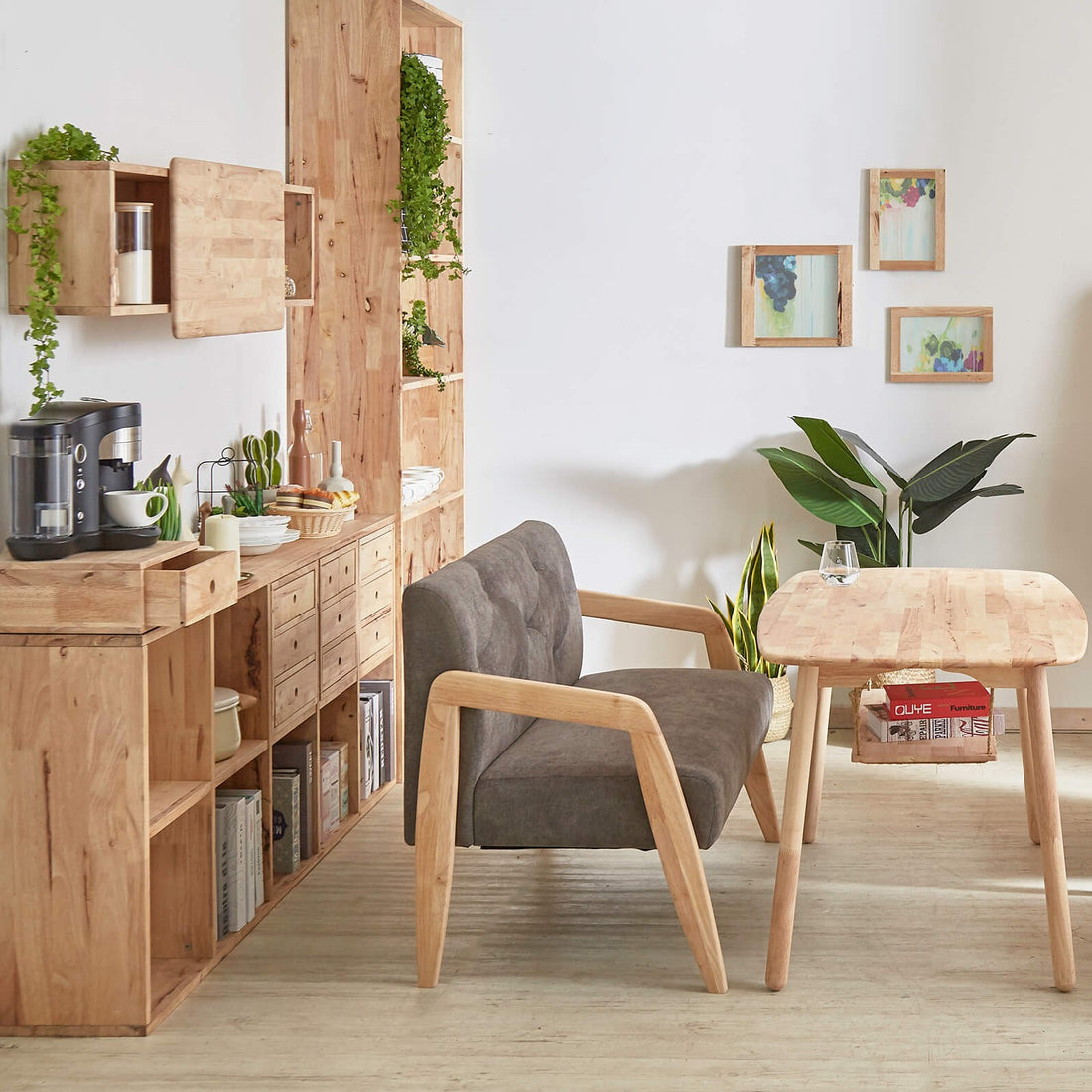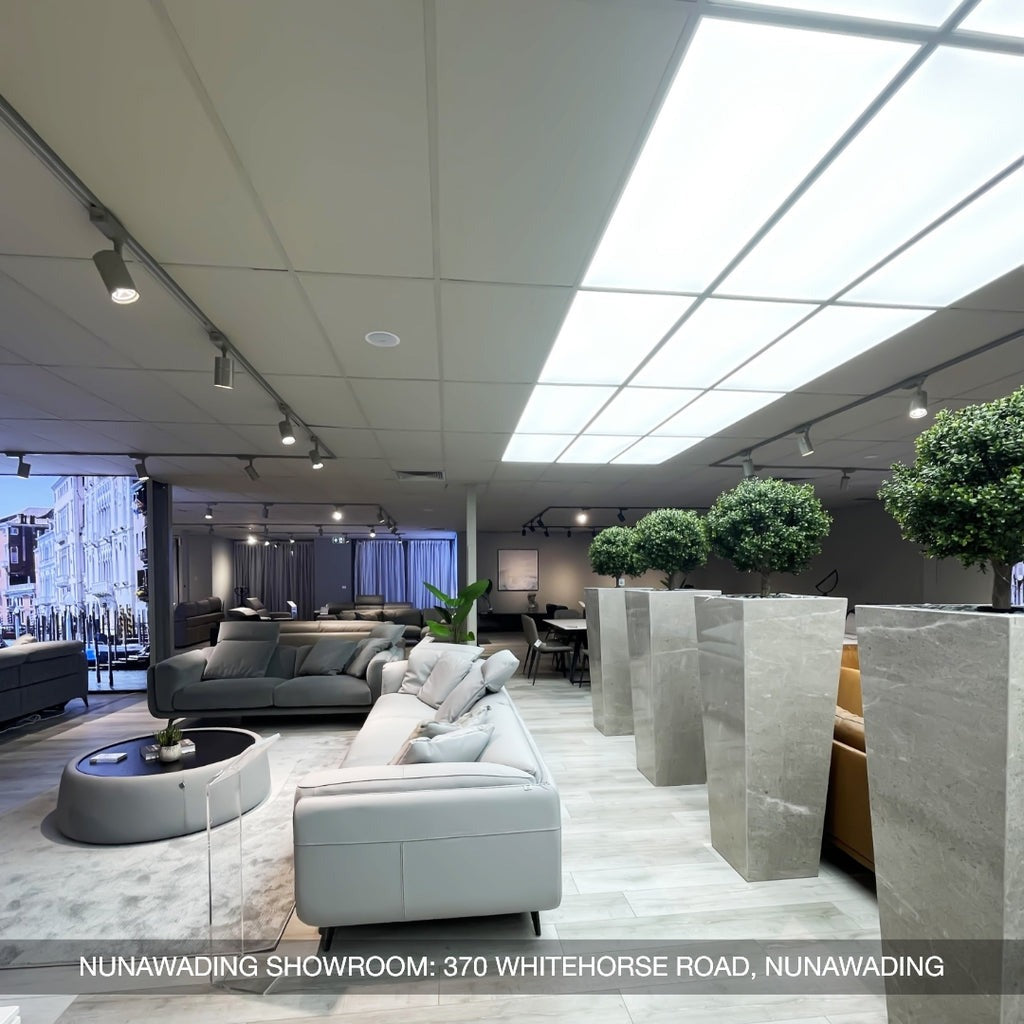We delve into the realm of sustainable design, specifically focusing on building a sustainable dining room. This endeavor extends beyond the mere selection of furnishings, encompassing a holistic approach to sustainable living.
In this guide, we explore the fusion of style and environmental consciousness, unveiling sustainable kitchen design ideas and strategies for how to create a sustainable dining room. From conscious material choices to mindful energy consumption, join us on a journey to transform your dining space into a haven of eco-friendly elegance, where every piece of furniture contributes to a greener, more sustainable future.
How To Create A Sustainable Dining Room
Choose High-Quality, Sustainable Materials
Choose High-Quality, Sustainable Materials
When embarking on the journey of crafting a green dining space, it's crucial to start with the foundation – the materials. Opting for high-quality, sustainable materials is the first step in fostering an eco-conscious environment. Choose furniture crafted from responsibly sourced wood or bamboo, which not only adds a touch of elegance but also minimizes the ecological footprint. This foundational decision sets the tone for a sustainable dining room that stands the test of time.

Opt for high-quality, responsibly sourced wood or bamboo furniture to build an eco-conscious environment.
Reduce Food Waste
The conscious consumer understands the impact of food waste on the environment and, in turn, actively seeks ways to minimize it. To implement this, consider incorporating smart storage solutions, like airtight containers and a well-organized pantry, to preserve the freshness of perishables and reduce unnecessary food disposal. By adopting a mindful approach to food storage and consumption, you contribute to a sustainable dining room that aligns with eco-friendly principles.
Invest In Long-Lasting Cookware
Investing in long-lasting cookware is a tangible commitment to sustainability. Choose durable materials such as cast iron or stainless steel that not only withstand the test of time but also eliminate the need for frequent replacements. This conscious decision not only reduces waste but also saves resources in the long run. It’s a small yet impactful step towards creating a sustainable kitchen, fostering a mindset that values longevity and durability in consumer choices.

Opt for materials like cast iron or stainless steel, withstanding the test of time and eliminating the need for frequent replacements.
Use Eco-Friendly And Sustainable Appliances
In the realm of sustainable kitchen design ideas, eco-friendly and sustainable appliances take center stage. Opt for energy-efficient appliances with high Energy Star ratings, significantly reducing energy consumption. These appliances not only contribute to a greener environment but also result in long-term cost savings on electricity bills. From refrigerators to dishwashers, the market now offers a plethora of sustainable options that align with the ethos of an eco-friendly dining space.
Reclaim And Reuse
Reclaiming and reusing materials in your dining room setup adds a touch of character and sustainability. Consider repurposing old furniture or incorporating reclaimed wood for a rustic yet environmentally conscious aesthetic. This sustainable approach not only adds unique charm to your dining room but also reduces the demand for new materials, thereby contributing to a circular economy.
Low Or No Voc Content
Ensuring low or no VOC content in the paints and finishes used within your dining space is paramount for maintaining indoor air quality. Volatile Organic Compounds (VOCs) are known to release harmful pollutants into the air, contributing to a variety of health issues. By opting for low or no VOC paints and finishes, you create a healthier living environment while adhering to sustainable kitchen ideas.
Energy-Efficient Lighting And Green Tech
Incorporating energy-efficient lighting and green tech into your dining room setup is the epitome of modern sustainability. LED bulbs, for instance, consume significantly less energy than traditional incandescent bulbs, reducing both your carbon footprint and electricity costs. Integrating smart home technology, such as programmable thermostats and energy-efficient appliances, further enhances the overall sustainability of your dining space.
Incorporating energy-efficient lighting and green tech into your dining room setup epitomizes modern sustainability.
Local Shopping
Supporting local businesses through mindful and sustainable shopping practices completes the circle of creating an eco-friendly dining room. Choose locally sourced furniture, decor, and food items to minimize transportation-related carbon emissions. By consciously making local choices, you not only contribute to the community but also reduce the environmental impact associated with global supply chains.
Importance Of Sustainability In Dining Room Design
Environmental Responsibility
Environmental Responsibility
One of the foremost reasons to prioritize sustainability in dining room design is the overarching sense of environmental responsibility it brings. Opting for responsibly sourced materials, such as reclaimed wood or recycled metals, minimizes the depletion of natural resources. The conscious consumer recognizes that each decision made during the design process has a direct impact on the planet. This awareness shapes dining rooms into sanctuaries that not only cater to our immediate needs but also honor our responsibility to future generations.
Energy Efficiency
Energy efficiency is a pivotal aspect of sustainable dining room design, providing concrete evidence of its impact on both the environment and our wallets. The integration of energy-efficient lighting, appliances, and HVAC systems reduces the overall energy consumption of the space. LED lighting, for instance, consumes significantly less energy than traditional incandescent bulbs, contributing to lower electricity bills and a reduced carbon footprint. These tangible benefits underscore the practicality and environmental soundness of sustainable design choices.
Reduced Carbon Footprint
Reducing the carbon footprint is a paramount consideration in dining room design, and sustainability serves as the guiding principle in achieving this goal. From choosing locally sourced materials to minimizing transportation-related emissions, each decision plays a part in curbing the environmental impact associated with traditional design practices. Sustainable kitchen design ideas, such as opting for regionally manufactured furniture and decor, not only support local economies but also contribute to the global effort of mitigating climate change by reducing the overall carbon emissions associated with the production and transportation of goods.
Health And Well-Being
The connection between sustainability and health and well-being is increasingly evident in modern dining room design. Low or no VOC (Volatile Organic Compounds) paints and finishes contribute to improved indoor air quality, safeguarding the health of occupants. Sustainable materials, free from harmful chemicals and pollutants, create a space that promotes physical health and mental well-being. The dining room becomes a sanctuary where the pursuit of sustainability is intertwined with the quest for a healthier lifestyle.
Long-Term Cost Savings
Beyond the immediate benefits, sustainability in dining room design translates into long-term cost savings. While sustainable materials and energy-efficient technologies may involve a slightly higher upfront investment, the enduring durability of these choices results in reduced maintenance and replacement costs over time. The resilience of sustainable design choices ensures that the dining room remains a functional and aesthetically pleasing space for years to come, offering a compelling argument for the economic viability of sustainability.
Resilience And Durability
Resilience and durability are inherent qualities of sustainable dining room design. From durable flooring materials to long-lasting contemporary dining room chairs crafted from sustainable sources, each element is chosen with an eye toward longevity. This resilience not only reduces the environmental impact of constant replacements but also fosters a mindset that values the enduring beauty of well-crafted, sustainable pieces. The dining room becomes a testament to the durability of conscious design choices, standing as a beacon of sustainability in a world often marked by fleeting trends.
Aesthetic Appeal
Aesthetic appeal is the final piece of the puzzle that underscores the importance of sustainability in dining room design. Contrary to the misconception that sustainable design compromises aesthetics, contemporary dining room chairs, furniture, and decor crafted from sustainable materials showcase an exquisite blend of style and eco-consciousness. The allure of a dining room designed with sustainability in mind lies in its ability to seamlessly integrate beauty and environmental responsibility, creating a space that captivates the eye while honoring the principles of a planet-friendly lifestyle.
Consider Eco-Friendly Materials For The Dining Room
Bamboo
Bamboo
Among the myriad eco-friendly materials available, bamboo stands out as a sustainable champion. Renowned for its rapid growth and renewability, bamboo serves as a testament to the balance between aesthetics and ecological responsibility. By choosing bamboo for dining room furniture and decor, homeowners contribute to a reduction in deforestation while enjoying the warmth and versatility this material brings to their spaces.

Opting for bamboo in dining room furniture and decor not only contributes to reduced deforestation but also allows homeowners to enjoy the warmth and versatility this material brings to their spaces.
Wood
Wood, a timeless and classic choice, takes on new significance when sourced responsibly. Opting for FSC-certified wood ensures that the timber comes from sustainably managed forests, minimizing the ecological impact. Wooden contemporary dining room chairs and tables, when crafted from responsibly sourced wood, not only exude natural charm but also embody a commitment to preserving the world's forests. This approach aligns seamlessly with the ethos of sustainable kitchen design ideas, where the beauty of nature is preserved and celebrated in every piece.
Glass
Glass, often overlooked in discussions about eco-friendly materials, can be a surprisingly sustainable choice. Recycled glass, in particular, significantly reduces the demand for raw materials and energy consumption in production. Choosing glass for dining room elements, such as tabletops or decorative pieces, adds an elegant and modern touch while exemplifying a commitment to resource efficiency and recycling.

Opting for glass in dining room elements like tabletops or decorative pieces not only adds an elegant and modern touch but also exemplifies a commitment to resource efficiency and recycling.
Manufactured / Laminated Wood
Manufactured or laminated wood provides a unique opportunity to utilize wood resources more efficiently. By combining smaller pieces of wood into larger panels, this process minimizes waste and maximizes the use of available resources. This approach aligns with furniture, where laminated wood can be expertly crafted into sleek, modern designs that epitomize both form and function. Sustainable kitchen design ideas champion the use of manufactured wood as an innovative solution to reduce the environmental impact associated with traditional woodworking practices.
Metal
Metal, a versatile and durable material, can be harnessed for eco-friendly dining room design. Choosing recycled metal for fixtures, lighting, or even contemporary dining room chairs contributes to a closed-loop system that minimizes the need for new raw materials and reduces energy consumption. This sustainable approach not only embraces the industrial aesthetic but also underscores the transformative power of responsible material choices in creating environmentally conscious dining spaces.
Marble and Granite
Marble and granite, though traditionally associated with luxury, can also align with sustainability goals when sourced responsibly. Opting for locally quarried stone reduces the carbon footprint associated with transportation, and choosing remnants or offcuts minimizes waste. A modern ceramic dining table, showcasing the elegance of stone while embracing eco-friendly practices, becomes a centerpiece that reflects both opulence and environmental responsibility. This integration of luxury and sustainability exemplifies the versatility and potential for eco-conscious choices in dining room design.
Conclusion
In crafting a sustainable dining room with eco-friendly furniture, the journey transcends mere aesthetics, becoming a pledge towards a greener tomorrow. By embracing sustainable kitchen design ideas, choosing eco-conscious materials, and incorporating contemporary pieces into a modern dining room set up, we redefine not just our living spaces but our relationship with the environment.
This conscious design approach embodies a harmonious coexistence of style and ecological responsibility. As we invest in the longevity of our spaces, we contribute to a world where every dining room is a testament to the enduring beauty of sustainable living, creating a legacy of conscientious design for generations to come.





